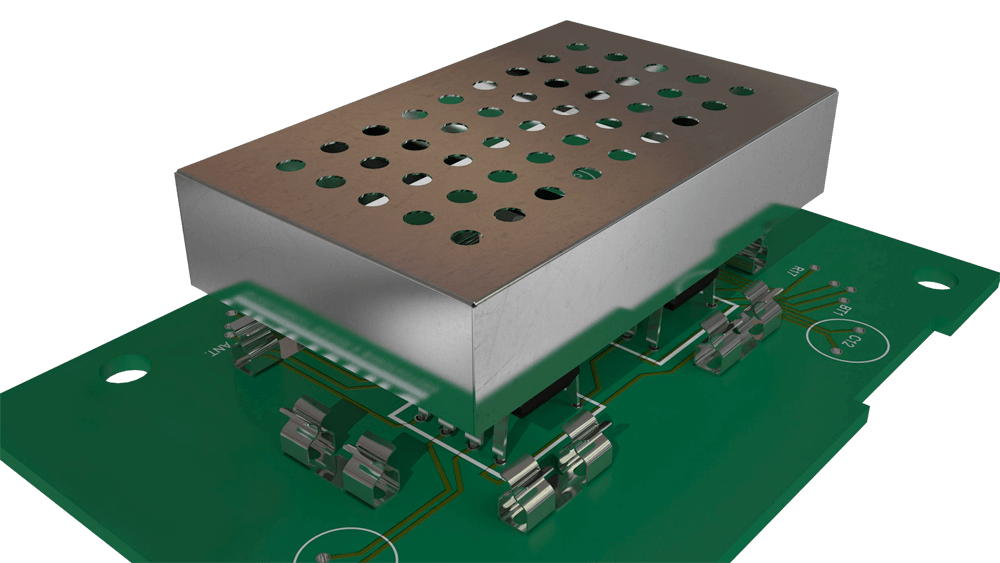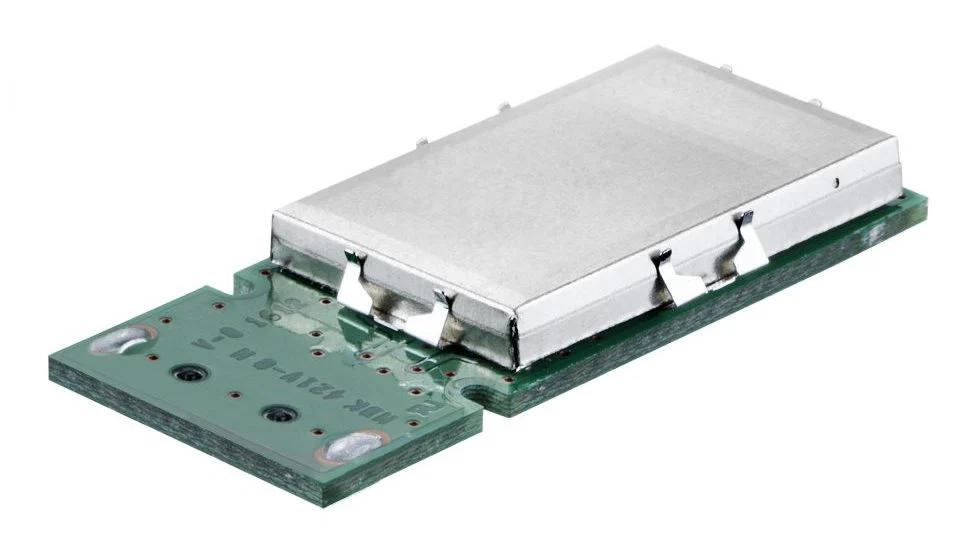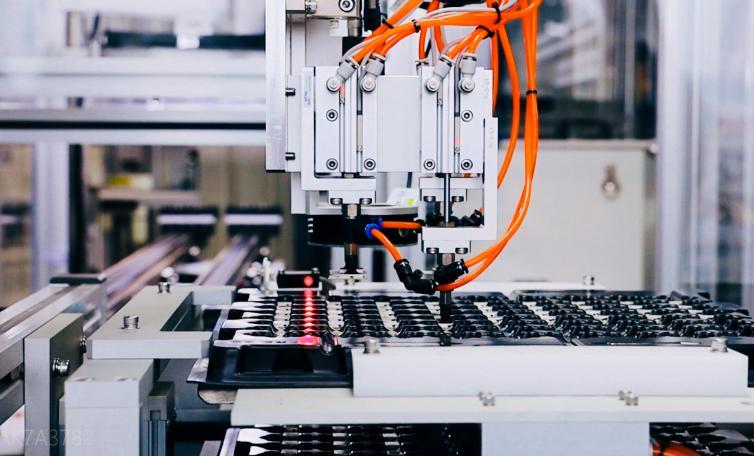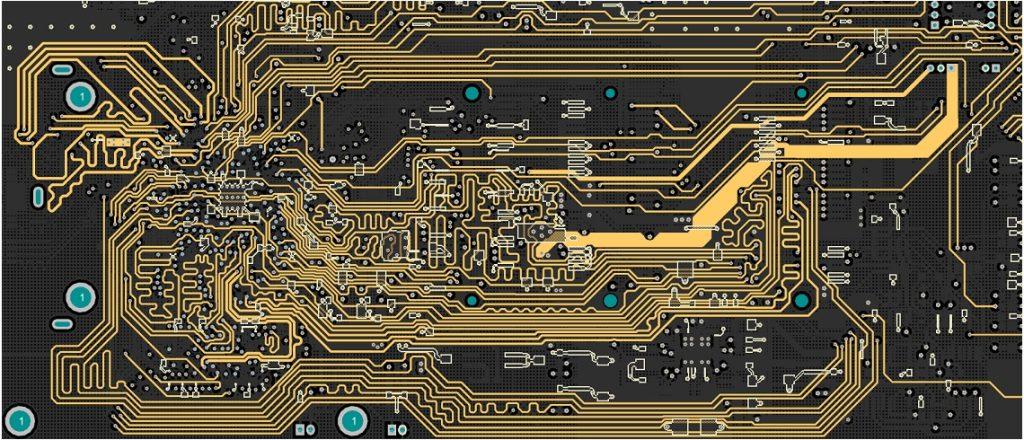- About PCB shielding
- What is PCB shielding?
- RF PCB shielding
- Types of PCB shielding
- PCB shielding materials
- Benefits of PCB shielding
- Shielding methods in high-speed PCB design
- Conclusion
About PCB shielding
Many electronic circuits need protection from electromagnetic interference. They may encounter unusual problems without protection, resulting in degraded performance or failure. Electromagnetic interference may also affect sensitive electronic components. PCB shielding needs to be installed on printed circuit boards. This technology ensures the safety and longevity of the board by blocking most types of radiation.
What is PCB shielding?
EMI shielding typically protects sensitive circuits and components from external electromagnetic signals. It also ensures that internally generated signals do not leak and interfere with adjacent circuits and components. Certain electromagnetic frequencies may interrupt safety-critical signals or interfere with communication lines. Typically, such protection is applied to sensitive components, including ICs and interconnecting lines on PCBs. Thus, shielding prevents signal attenuation, interruptions, data corruption, component failures, and software defects in circuits and components on the PCB.

RF PCB shielding
Effective RF shielding typically blocks radio frequencies and electromagnetic radiation by reducing the coupling of electromagnetic fields and radio waves. These shields act like Faraday cages and also impede electrostatic fields.
Types of PCB shielding
Many types of shielding materials on the market offer practical and simple solutions. While traditional methods involving good layout practices and filters help reduce EMI/EMC problems, they may not be fully effective. To improve the situation, designers typically use.
- Shielding cans: These custom shielding boxes are usually made of metal and surround the noise-producing circuitry, thus limiting electromagnetic emissions.
- Electromagnetic shielding materials are elastomer materials applied to special components to limit electromagnetic radiation.
Ferrite beads, plates and rods: Most ferrite beads, plates and rods behave similarly to EMI filters.
- Mesh materials: Instead of rigid shielding cans, these flexible and highly conductive materials are used in flexible and rigid-flexible combination boards.
- Unified grounding layers: These layers can provide multiple ground points while allowing conductive shielding materials to be grounded.
Combining shielding with the following PCB layout best practices will enable designs to pass EMI/EMC testing.
PCB shielding materials
PCB shields are made from a variety of ferromagnetic metals. The most popular are.
1. Tin-plated phosphor bronze
2. Stainless steel
3. Nickel silver
4. Tin-plated copper
5. Tinned cold rolled steel
Anpllopcb most recommends using tinned steel to shield electromagnetic waves below 100 MHz. To shield signals above 200 MHz, tinned copper is a better choice. The tin plating on the shielding material makes ground through soldering to the PCB easier. Aluminium is not ferromagnetic and cannot be used as a shielding material.
Benefits of PCB shielding
There are many benefits to using PCB shielding on printed circuit boards. In addition to EMI/EMC protection, these shields offer the following benefits.
(1) Unlimited design possibilities
(2) Variable footprint
(3) Surface mount or through-hole
(4) Configurations can be low-profile
(5) Multi-cavity mode
(6) Dual security – cover and fence
(7) Input/output holes
(8) Connector cutout
(9)Ventilation holes
(10)Removable for easy access
(11) RF absorber for extended shielding
(12)Shock and vibration prevention through the safety locking mechanism
(13)Insulation liner
(14)ESD protection

Shielding methods in high-speed PCB design
The transmission rate of high-speed PCB design wiring systems is also accelerating with the change of times, but this also brings a new challenge – the resistance to interference is getting weaker and weaker. It all stems from the fact that the higher the frequency of the transmitted information, the more sensitive the signal and the weaker the energy, thus making the wiring system increasingly susceptible to interference. In some common electronic devices, such as computer screens, cell phones, motors, radio broadcast equipment, Etc., cables and equipment can interfere with other components or be heavily interfered with by other sources of interference.
In particular, when using high-speed data networks, the time required to intercept large amounts of information is significantly less than the time required to intercept low-speed data transmissions. The twisted pair in the data can resist external interference and inter-pair crosstalk through its stranding at low frequencies. However, at high frequencies (especially at frequencies above 250 MHz), only the stranding can not achieve the purpose of anti-interference; only the shield can resist external interference.
The role of the cable shield is similar to that of a Faraday shield. Interference signals enter the shield but not the conductor. As a result, data transmission can operate fault-free. Since shielded cables have lower radiated emissions than unshielded cables, network transmissions are blocked. Shielded networks (shielded cables and assemblies) significantly reduce the radiation level of electromagnetic energy that may be intercepted when entering the surroundings.
Shielding options for different interference fields mainly include electromagnetic interference and radio frequency interference. Electromagnetic interference (EMI) is mainly low-frequency interference. Motors, fluorescent lamps and power lines are common sources of electromagnetic interference. Radio Frequency Interference (RFI) is radio frequency interference, mainly high-frequency interference. Radio, television broadcasting, radar and other wireless communications are common sources of RFI. For anti-electromagnetic interference, braided shielding is the most effective because it has a low critical resistance; for RFI, foil shielding is the most effective. Since woven shielding depends on wavelength variation, the gap it creates allows high-frequency signals to move freely in and out of the conductor; for mixed high and low-frequency interference fields, a combination of foil layer and woven grid shielding with broadband coverage should be used. In general, the higher the grid shielding coverage, the better the shielding effect.
The above is the shielding method in the design of high-frequency PCBs, and I hope to provide you with some references!
Conclusion
Custom circuits can be shielded by PCB shielding to obtain the necessary protection. However, the designer must ensure the circuit meets the shield’s requirements. They are free to use special materials best suited for specific frequency ranges. With RF shielding, unwanted radio frequencies and electromagnetic radiation can be blocked. A variety of reasonably priced PCB shielding materials are available on the market.



